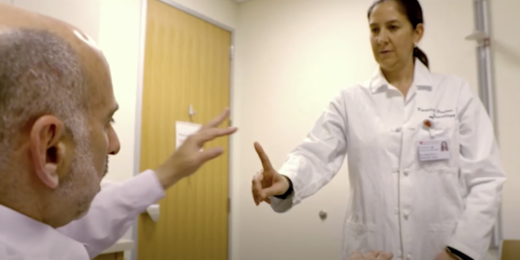Soon after Alice Ting, PhD, arrived at Stanford in 2016, her lab began to pursue a fantastical idea: Tracking with extreme precision the system of neurons that underlie a thought or cognitive process.
Their work has evolved into FLiCRE (Fast Light and Calcium-Regulated Expression; pronounced "flicker"), a molecular probe that is designed to map how the brain thinks and remembers by tagging, recording and controlling functions of individual cells.
The researchers have successfully used FLiCRE in proof-of-concept experiments to both identify neurons linked to avoidant behavior in mice, and to reactivate those neurons, leading mice to act out those behaviors. A paper detailing the customizable tool was recently published in Cell.
Christina Kim, PhD, a postdoctoral scholar in genetics at Stanford, described the project for a Stanford News article I wrote on the research: "The beauty of FLiCRE is that we can pulse and activate neurons in one region and then record all of the connected downstream neurons. It is a really cool way to look at long-range brain activity connections."
How FLiCRE works
FLiCRE consists of two chains of molecular components that respond to the presence of blue light and calcium in a cell. A high calcium level indicates the cell has been activated, while researchers can control whether the cell is bathed in blue light, making it easier to regulate the timing of an experiment.
FLiCRE works by infiltrating a cell through a harmless virus, injected by a scientist. As the news article explains:
One part of FLiCRE attaches to the cell membrane and contains a protein that can enter the cell's nucleus and drive expression of whatever gene the researchers have selected. The other part of FLiCRE is responsible for freeing the protein under certain specific conditions, namely if the concentration of calcium is high and the cell is bathed in blue light.
Once the protein has been freed and the gene has been expressed, researchers can use RNA sequencing to quickly create a cell-by-cell record of exactly which neurons FLiCRE has activated.
FLiCRE in action
The Ting lab teamed up with the lab of Karl Deisseroth, MD, PhD, a professor of bioengineering and of psychiatry and behavioral sciences, to test FLiCRE in mice.
First, they injected FLiCRE components into cells in the nucleus accumbens, a brain region thought to play an important role in human psychiatric diseases, including depression. Then they used an opsin -- a protein for controlling neural activity with light, developed by Deisseroth -- to stimulate a neural pathway associated with avoidance behavior. Once the pathway was activated, the researchers used RNA sequencing to map more precisely which individual cells FLiCRE had prodded to express genes.
In their second set of experiments, the researchers tested whether FLiCRE had identified the correct cells associated with avoidance behavior. They used FLiCRE again, this time to express an opsin to activate those cells whenever the mice entered a certain room; and they found that the mice began to avoid that room, indicating that the correct neurons had been successfully tagged and reactivated.
Next steps for FLiCRE
The researchers plan to continue improving FLiCRE; and future iterations of FLiCRE might focus on other biochemical events, such as protein interactions or neurotransmitter release. They are also excited to see other ways people may use their tool, which was always intended as an invention that defies the boundaries between different scientific fields.
"I moved to Stanford in 2016 with the hope of being able to carry out extremely interdisciplinary and collaborative projects such as this," said Ting, who is a professor of genetics with Stanford Medicine and of biology in the School of Humanities and Sciences. "This project has been one of the most rewarding aspects of my move to Stanford -- seeing something this challenging and ambitious actually work out."
Photo by Getty Images




